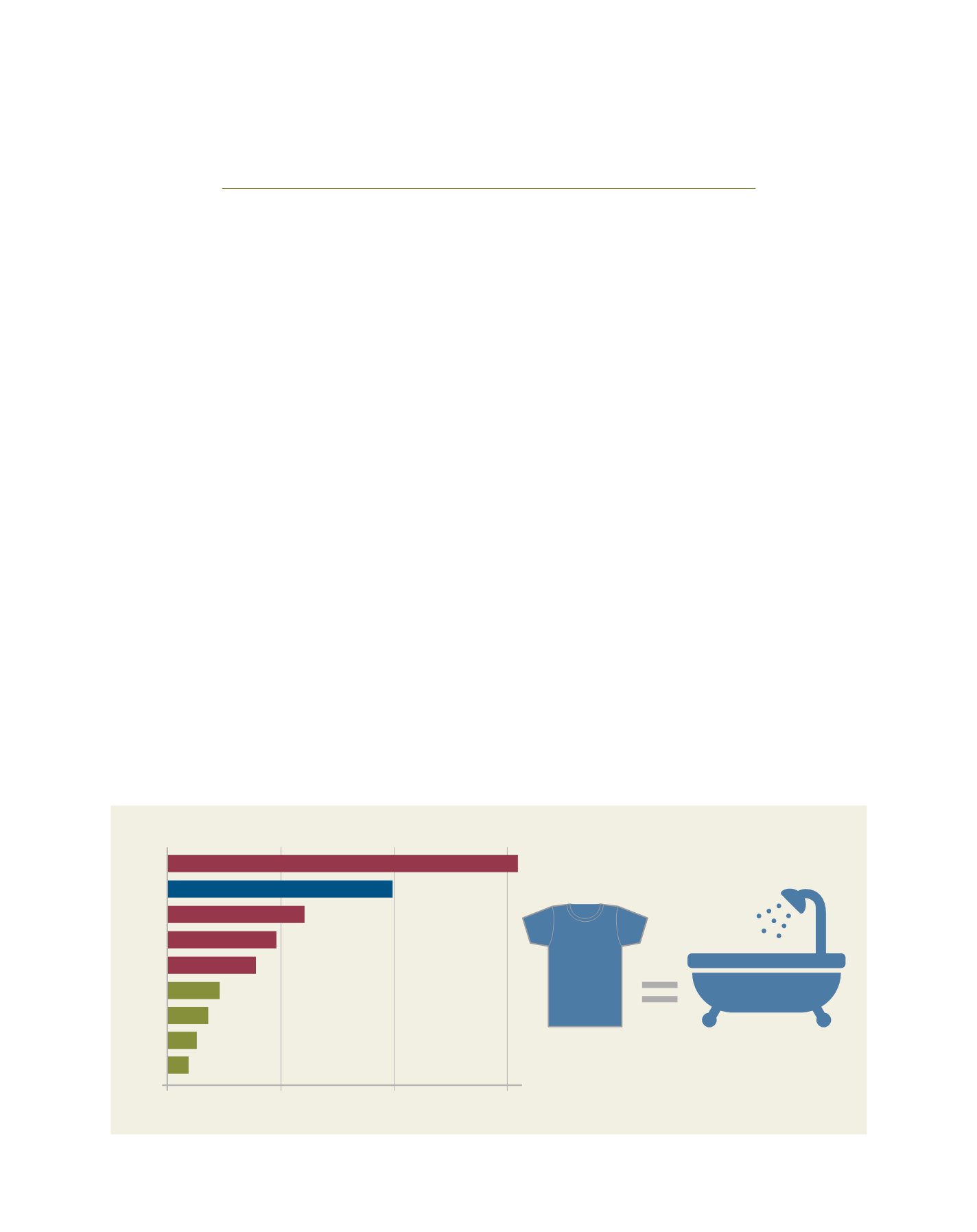

[
] 80
A B
et ter
W
or ld
The hidden implications of SDG 6
Dawn McGregor and Debra Tan, China Water Risk
W
e use water in the home every day, usually with
little thought. The water used to grow crops,
package food and drinks, generate power, mine
resources and produce goods that shape our life, from
fashion to electronics, is less obviously recognised.
Greater emphasis on access to safe drinking water and sani-
tation is an obvious view of SDG 6. Yet, municipal water
represents only 12% of global withdrawals in 2016, the
smallest sector share, according to the Food and Agriculture
Organization of the United Nations (FAO). The largest users
and biggest polluters of water globally, industry and agricul-
ture, remain hidden from popular view but play key roles in
achieving sustainable water resources for all.
The actions adopted for development will have to go
beyond improving access, and making quality and efficiency
gains. With many parts of the world now facing extreme
water stress and pollution, a new way of managing water is
needed as much as changing business behaviours. There will
be transitional risks of achieving SDG 6, but are we ready for
their hidden implications?
The less obvious – dirty, thirsty fashion
Agriculture is the largest user of water globally, account-
ing for 69% of water withdrawals in 2016. It is also a major
water polluter with its excessive use of nutrients, pesticides,
fertiliser and other pollutants. World Wide Fund for Nature
(WWF) says that the amount of pesticide sprayed on fields
has increased 26-fold over the past 50 years. One of the crops
that absorb a significant amount of global insecticides and
pesticides is cotton.
One of the largest water using and polluting industries
is textiles. The World Bank estimates that almost 20% of
global industrial water pollution comes from the treatment
and dyeing of textiles. Cotton production consumes 16% of
global insecticides and 7% of herbicides, according to the
Pulse of The Fashion Industry
report, 2017.
1
A single cotton t-shirt has a virtual water footprint of 2,700
litres, or around 13 bathtubs. Cotton has a higher virtual
water footprint per kilogram than some proteins and grains.
The number of garments produced annually has doubled
since 2000, according to McKinsey & Company. In 2014 the
number of garments produced globally exceeded 100 billion
for the first time, which equates to nearly 14 items of clothing
for every person on earth.
In 2016, China was the leading exporter of textiles and
clothing with a 37.2% and 36.4% share respectively, accord-
ing to the World Trade Organization (WTO). Other key
countries fuelling the fashion industry include India and
Bangladesh, which account for 5.7% and 3.2% of textile
exports and are the global third and seventh ranking export-
ing countries, respectively.
In China, it is estimated that the textile industry discharges
1.5 times the amount of wastewater than the nation’s entire
coal industry (and China produces around half of the world’s
coal). The industry ranks second for use of chemicals, record-
Virtual water footprint: cotton vs food
1 bathtub = ~200 litres of water
Beef
Cotton
Sheep
Pork
Chicken
Rice
Soya
Wheat
Corn
0
Litres/Kg
5,000
10,000
15,000
Source: China Water Risk, the Water Footprint Network
Note:1bathtub=~200 litresofwater
Source:ChinaWaterRisk, theWaterFootprintNetwork
Thirstycotton
Cotton T-shirt
1
13.5
















